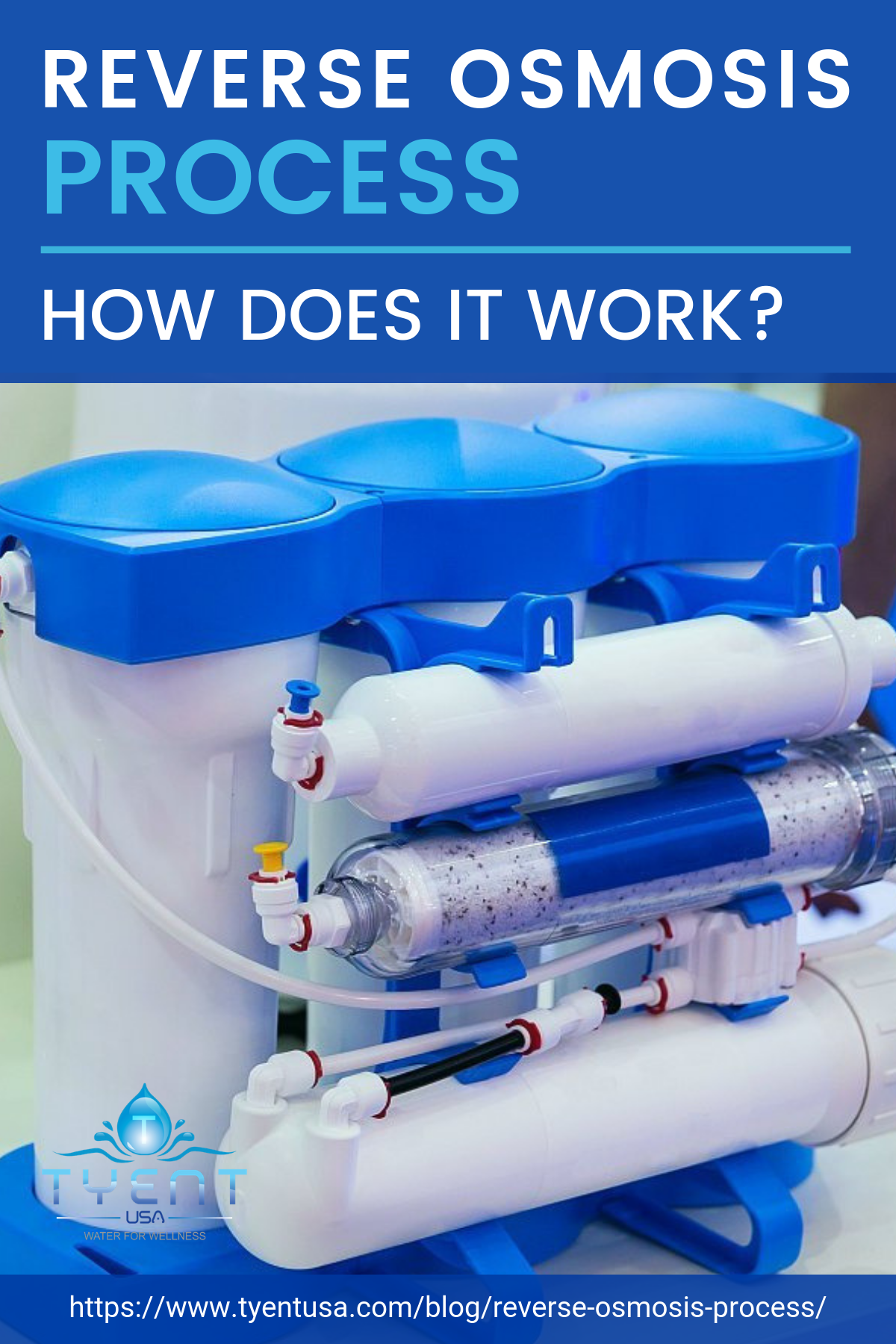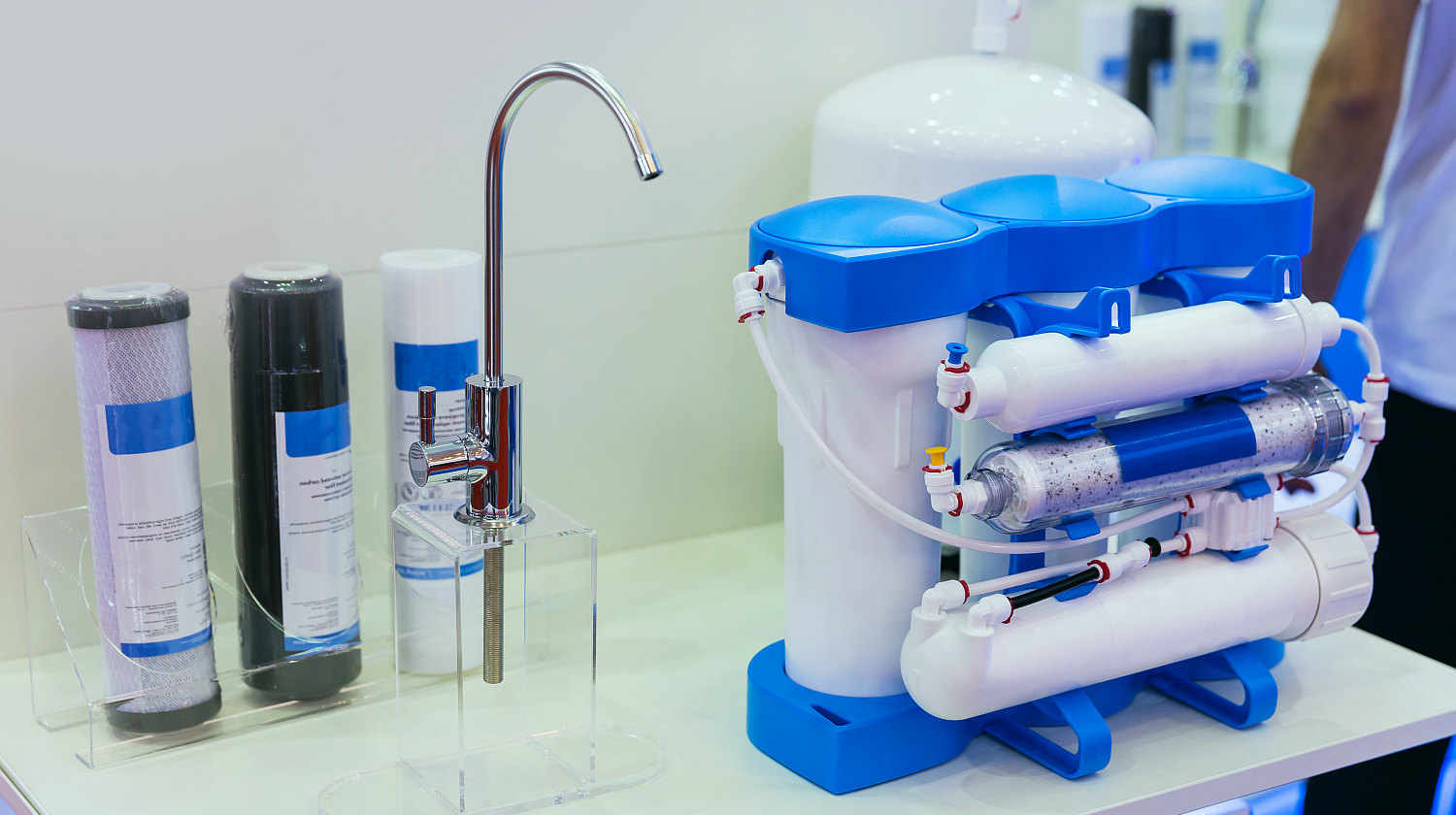Learn how the reverse osmosis process removes particles to produce the purest form of water.
How Does Reverse Osmosis Process Work? Here’s a Step-By-Step Guide
What is Reverse Osmosis? A method of water purification that removes particles from water by way of a semipermeable membrane. This removes salt, molecules, ions, and larger particles, resulting in pure water.
Step 1: Set-up
Once you have a reverse osmosis filtration system installed, all it needs to do is to have its intake pump set-up at the water source.
Step 2: Treatment Preparation
During pre-treatment, larger solids such as carbonic acids and sediments are removed from the water. This is so the semipermeable membrane can be protected.
This step also deals with the killing of bacteria by using oxidizing biocides such as chlorine.
Step 3: Water Passage
The water is then moved by a high-pressure pump towards the membrane. There are different pressure levels for different kinds of water: 225-376 psi for brackish water, or 800-1180 psi for seawater.
Step 4: Membrane Passage
This part of the filtration system consists of a pressure vessel that allows the water to make contact with the membrane.
Step 5: Energy Recovery
Here there will be a reduction of energy to cut back on consumption. The energy put into the high-pressure pump can then be recovered and redirected to concentrate flow and efficiency.
Step 6: Remineralization
Desalinated water is, then, remineralized in order to protect the interior of water storage and pipes. This is usually done by adding caustic soda or lime to protect from corrosion.
Liming material is also used in order to keep the pH balance at 6.8-8.1 to meet drinking/potable water standards.
Step 7: Water Disinfection
Post-treatment consists of ensuring secondary protection against any bacteria or pathogen that may have bypassed the entire filtration process.
What’s the Use for Water That Undergoes the Reverse Osmosis Process?
Water that has undergone reverse osmosis is drinkable. Entire cities employ a reverse osmosis filtration system, especially those in close proximity to saltwater and have little to no sources of freshwater nearby.
Advantages of Reverse Osmosis Water
It Provides Clean Water
The primary selling point of reverse osmosis water is it’s pure. This makes sense for communities living in areas that have issues with their water such as pesticide or herbicide contamination.
Ideal for Travel

It’s also an ideal option for camping or traveling to places with suspicious local water sources. This is because the reverse osmosis process is among the most effective filtration systems for removing minerals and debris in drinking water.
Disadvantages of Reverse Osmosis Water
While drinking reverse osmosis water can be convenient while out in the wild or in a foreign environment, there are also many disadvantages to it.
Indiscriminate Filtering
One of its disadvantages is it doesn’t have a way to differentiate between good and bad minerals. It has the ability to filter out bad chemicals and contaminants such as pesticide and arsenic, but it can also remove trace minerals like manganese and iron that are beneficial to our bodies.
It may not seem to matter, as we get our nutrients for larger sources like the foods we eat, but apparently, not all nutrients can be sourced solely from food. Iron deficiency and anemia plague 9-12% of women and 2% adult men in the U.S. alone, while manganese deficiency can result in a hormonal imbalance.
RELATED: Crisis In Texas – Is Reverse Osmosis Water As Good As A Water Ionizer?
Vitamin Reduction
Using reverse osmosis water, which is demineralized water, in cooking reduces the vitamins and minerals in foods. It can absorb up to 60-70% of the manganese content present in food, as demineralized water will bond with any mineral it encounters.
The World Health Organization has even released a report about concerns regarding reverse osmosis water. It takes note of how the long-term effects of drinking reverse osmosis water have not undergone a thorough examination.
The report also expresses concern for the potential of long-term health effects presented by reverse osmosis water. Countries lacking reliable freshwater sources are at risk, as well as those with homes where water treatment systems are in popular use.
Wastewater
Another downside for reverse osmosis water is its filtration systems actually end up losing and wasting water. The energy used through the system can actually waste up to 85% of the water that goes through it.
It Takes Forever
One disadvantage of reverse osmosis water systems is it takes too long to filter water. One gallon of water, for example, takes 3-4 hours to filter, meaning it would take an entire day just to filter enough water for a whole family.
Difficult Maintenance
Reverse osmosis filtration systems are not completely self-sustaining and are difficult to maintain and keep clean. The membrane is notoriously difficult to clean and must undergo thorough cleaning often as it can trap and accumulate bacteria when neglected.
It’s Expensive

To top it all off, reverse osmosis water systems can be quite expensive. Entire units can cost up to thousands of dollars, and that’s not including the cost of installation.
While the higher a filtration system goes in the price range, the quality does indeed improve, the wastewater is still a significant concern.
It Can Produce Acidic Water
While the reverse osmosis process does take out all the bacteria and contaminants, the stripping of minerals tends to make the water very acidic. Acidic drinking water can throw off the alkaline level in the blood.
It Doesn’t Remove All Dangerous Chemicals
It’s true that the reverse osmosis process filters out a majority of minerals from the water, but some contaminants are too strong. These include volatile organic compounds, chloramines, pharmaceuticals, and synthetic minerals.
Water is the essence of life, and we mean that literally as our bodies are composed of mostly water. We need water to function, to keep our cells hydrated and performing well, keeping our joints lubricated, our moods high, and so much more.
Investing in more efficient water systems may be a far better option for you and your family. Water ionizers, for example, is more efficient at processing water.
Water ionizers also produce ionized water, which is rich in minerals and is highly alkalizing. Drinking purified reverse osmosis water is good when you’re playing it safe in the wilderness, but always opt for the water that has more good minerals that can benefit your body in the long term – like ionized reverse osmosis water which you can get through Tyent filtration systems.
What are your experiences with reverse osmosis water systems? How does it fare against other water filtration systems you’ve tried? Share your experience with us in the comments section below!
Up Next:
- 3 Reasons To Think Before You Drink Reverse Osmosis Water
- Tyent Water Ionizers Versus The Competition, Part 4: Water Ionizer vs. Reverse Osmosis System
- 101 Reasons To Love Tyent Water Ionizers: Health Benefits And More


![The Dangers of Reverse Osmosis Water [2024] hydrogen water](https://www.tyentusa.com/blog/wp-content/uploads/2020/08/Screenshot-2024-09-08-083127-150x150.png)







